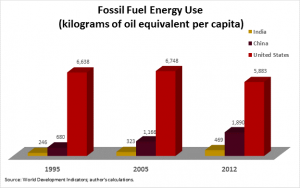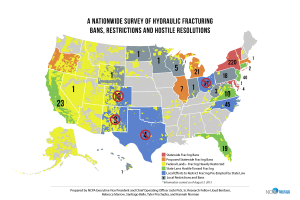Congress is planning to vote on lifting the ban on U.S. crude oil exports by the end of this month. Across the aisle, most Republicans support the end of the export ban. In fact, the Republican-controlled House is scheduled to vote on legislation that would lift the restrictions. In the Senate, Majority Leader Mitch McConnell said for the first time he supports lifting the ban.
Congress passed the ban after the 1973 Arab oil embargo, which sent gas prices soaring. Now, the “shale revolution” has stimulated tremendous domestic oil and natural gas production, thanks mainly to hydraulic fracturing and horizontal drilling methods. The Obama administration has permitted exports of some exchanges of oil with Mexico and federal policies permit exports of crude oil to Canada.
The EIA projects the U.S. will eliminate net energy imports sometime between 2020 and 2030. Rising oil prices would mean the U.S. reaches this landmark turning point sooner, but even low prices are unlikely to stop the swing from importer to exporter. The U.S. has been a net importer of energy since the 1950s.
Opponents of lifting the ban include former Secretary of State and presidential hopeful Hillary Clinton who said she would only support lifting the U.S.’s 40-year-old ban on oil exports if it was part of a broader plan that included concessions from the oil and natural gas industry. The United Steelworkers, which represent workers at several Louisiana refineries, contends that lifting the ban would jeopardize U.S. energy security and adversely affect gas prices.
The controversy over whether or not to lift the ban centers around fears that no ban could mean higher gasoline prices held by some Democrats and consumer groups. Further, environmentalists worry lifting the ban would lead to more oil & gas exploration and development. Even, President Obama opposes such legislation.
However, a recent Government Accountability Office review noted wide agreement among analysts that allowing crude exports would tend to decrease international oil prices, which is the way to depress gasoline prices. That is why analysts predict that lifting the export ban would increase U.S. crude oil prices by $2 to $8 per barrel but reduce U.S. gasoline prices by 1.5 cents to 13 cents per gallon.
Another recent report by the United States Energy Information Administration says that although unrestricted exports of U.S. crude oil would either leave global crude prices unchanged or result in a small price reduction compared to parallel cases that maintain current restrictions on crude oil exports, other factors affecting global supply and demand will largely determine whether global crude prices remain close to their current level.

